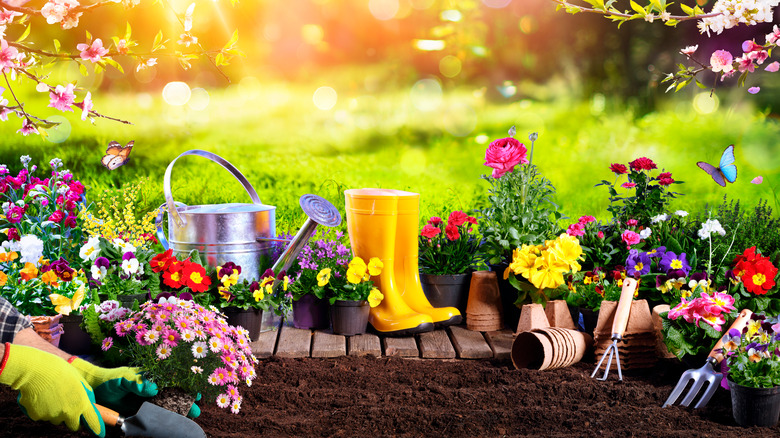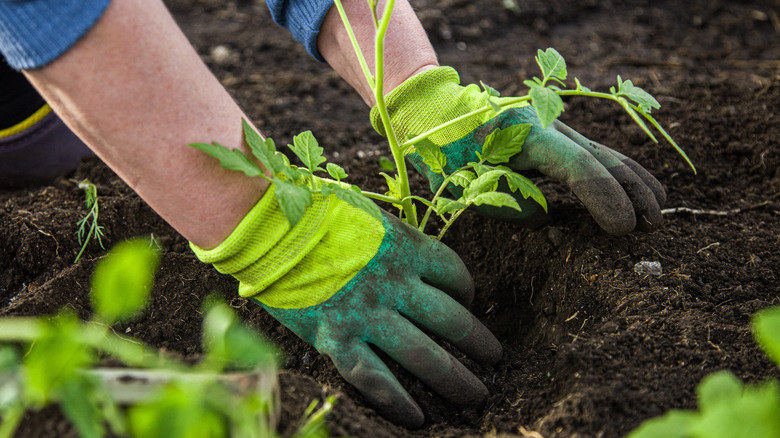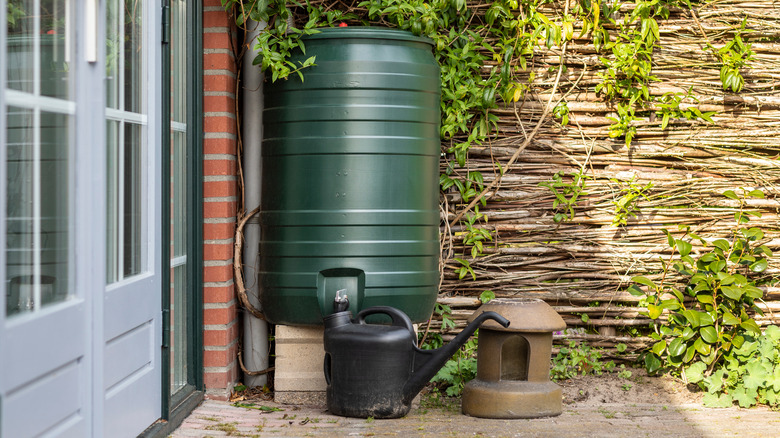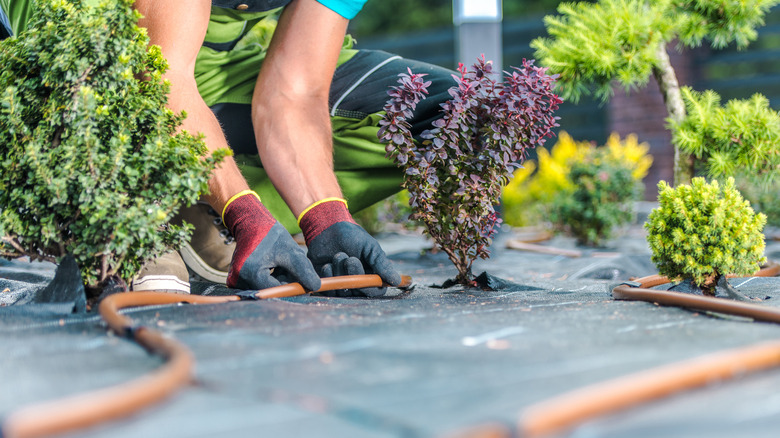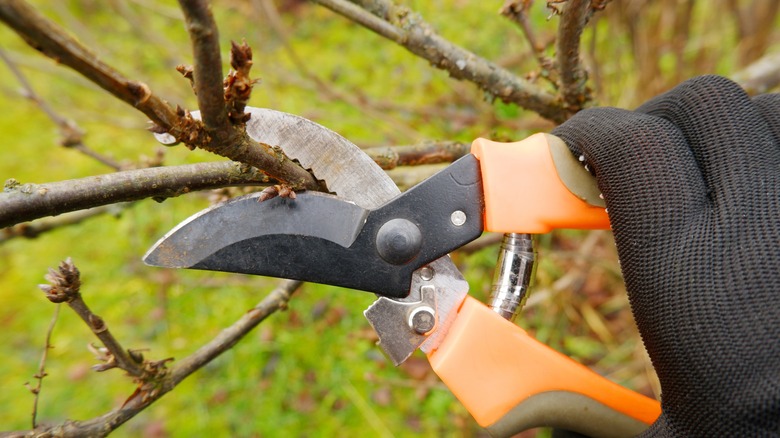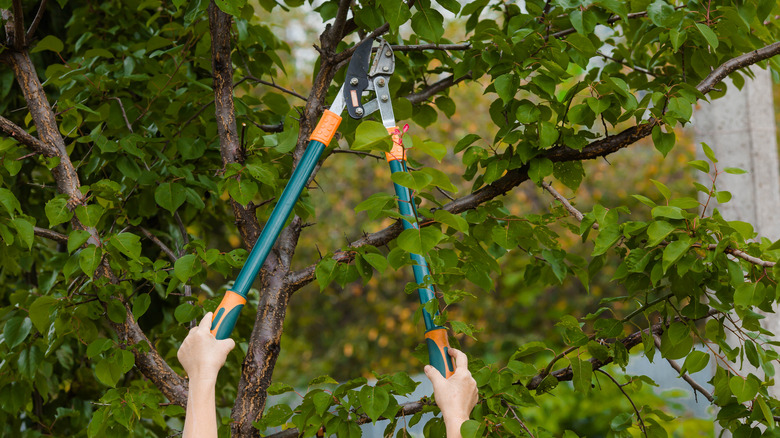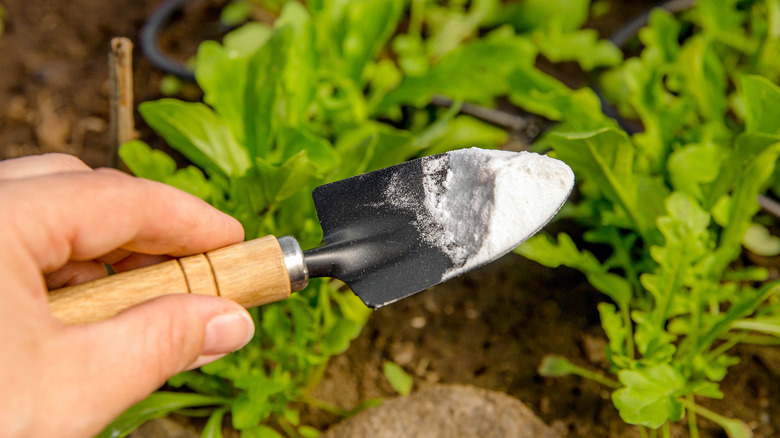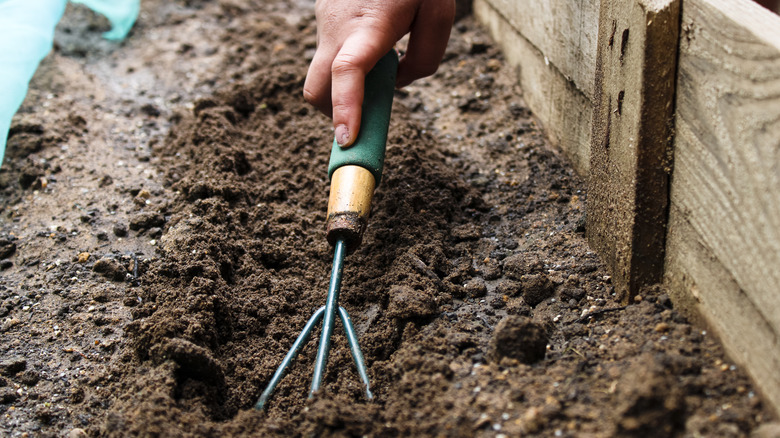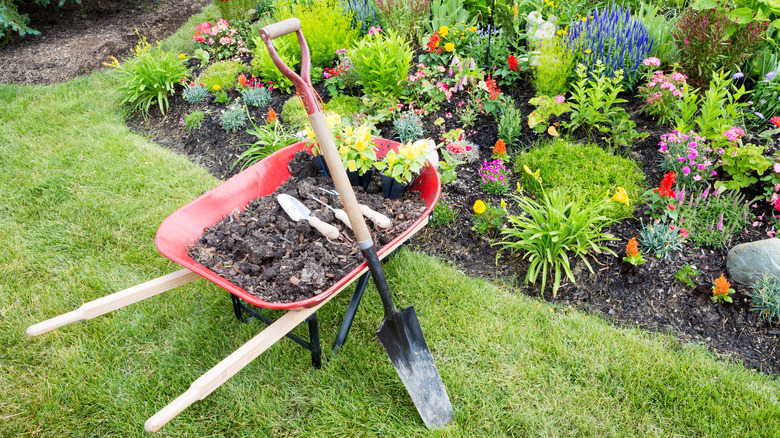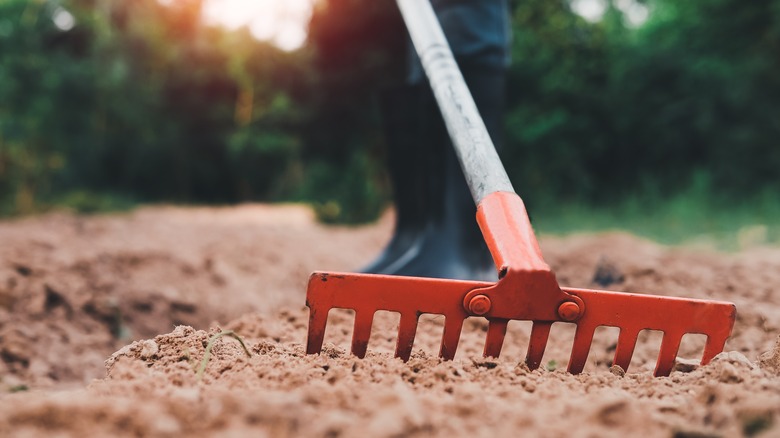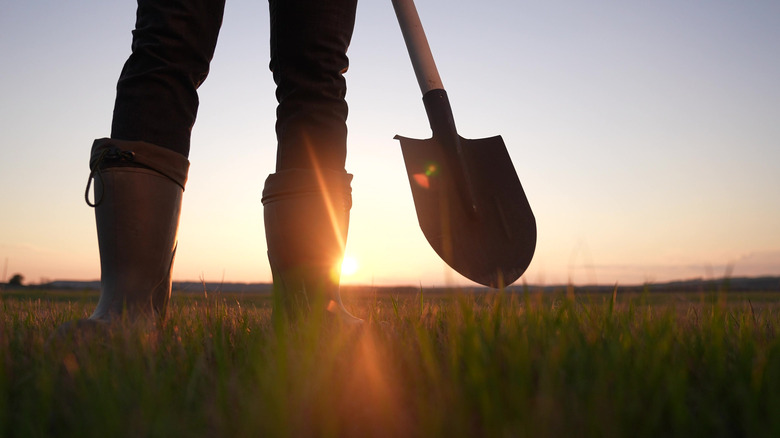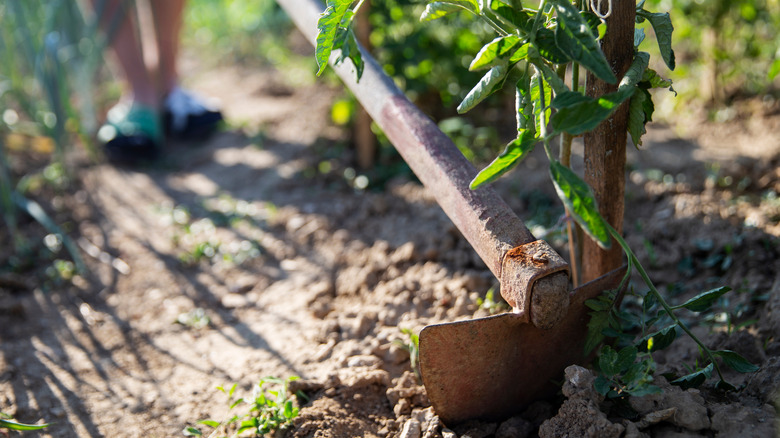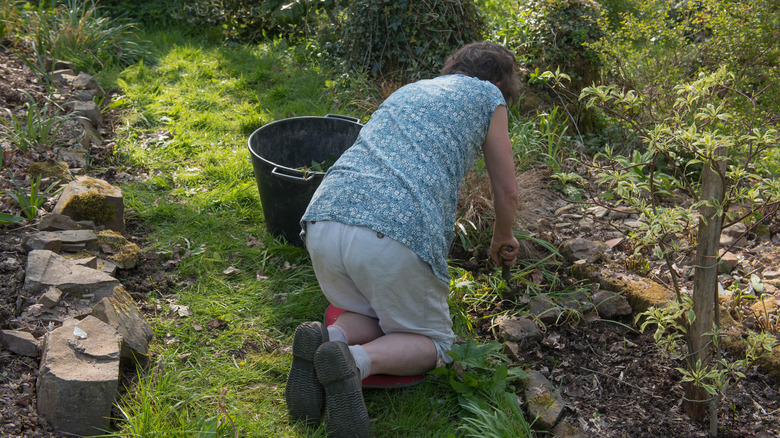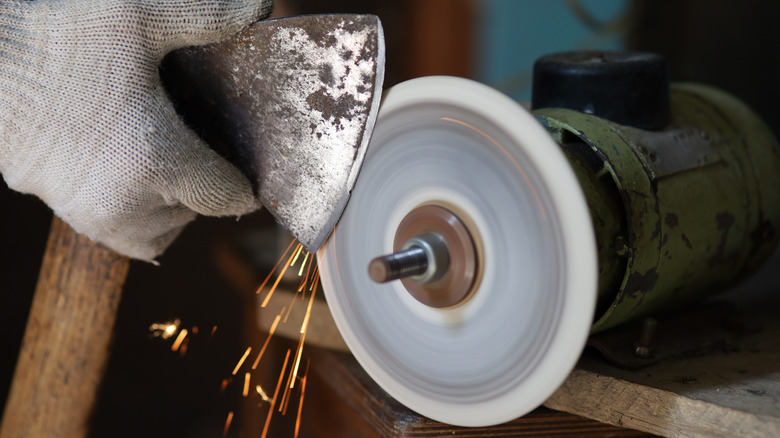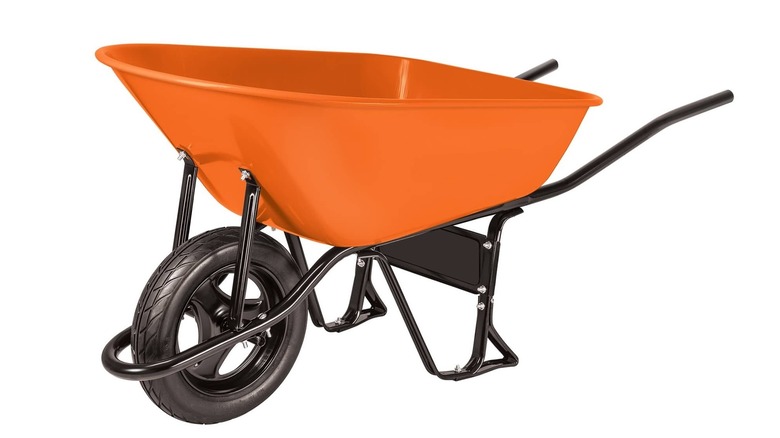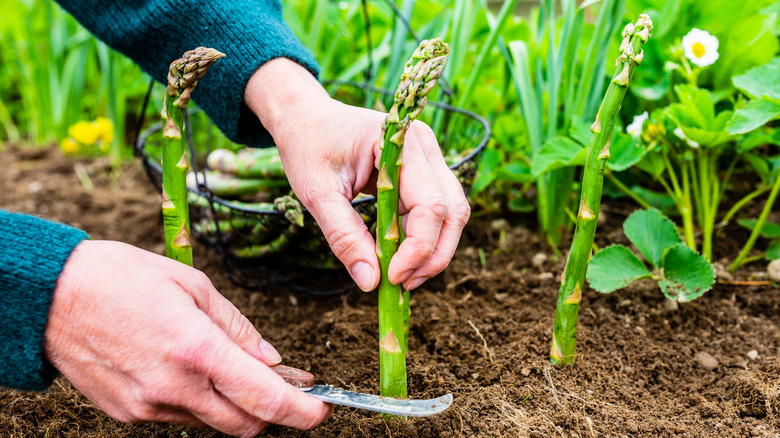The 15 Most Essential Gardening Tools
Gardeners know that the task of cultivating great fruits, vegetables, herbs, and more starts and ends with the tools used in the process. Filling your shed with useful gear can make the process of gardening more efficient and, as a result, far more enjoyable. No one wants plants to perish in their garden, and this may even turn some newer gardeners off of the hobby altogether — even as The Guardian notes that this phenomenon is a rite of passage.
Using a great set of essential gardening tools can make the endeavor more enjoyable and even create an easier work environment that supports a thriving hobby and garden full of great crops and flowers. These 15 tools form the baseline for those getting into the world of gardening and landscaping around their homes. Of course, good maintenance routines and proper storage will ensure that all of your tools continue to perform at their best for many years to come.
1. Gardening gloves
Gardening gloves are some of the first tools that any self-respecting home gardener needs to add to their toolshed (via the University of Florida Extension). You might not think of gloves as tools, but a good pair will protect your hands from cuts, scrapes, and bruises that can otherwise put you out of commission for a few days after an injury. Gardening gloves are a great place to start when rounding out a set of essential tools because they can protect you from abrasions caused by thorns, and skin irritation from contact with particularly feisty weeds.
2. Watering equipment
One of the two primary ingredients for healthy plant growth is water. Nothing will grow in your garden if you don't water the soil (the other half of this basic equation). A simple hose or watering can give you the basic watering capacity necessary to keep your plants hydrated and healthy. Watering cans come in various sizes and spout types (via Your Indoor Herbs), so finding an all-purpose watering option or a set of versatile tools will give you the best approach to keeping the garden in great shape.
3. Irrigation additions
In addition to basic watering functionality, irrigation systems are a great way to step up the watering tasks in your space. For a large garden or a homeowner who won't always have time to water their crop in the mornings (the best time to water, according to Iowa State University Extension), built-in irrigation is the best option. There are many approaches to creating the perfect automated or manually controlled watering setup. Considering the size, height values, and more surrounding the garden you've cultivated will help make this tie-in complete.
4. Pruning shears or secateurs
Pruning shears, also known as secateurs, are a great tool for any home gardener to carry along with them throughout a day of tending to the yard. Pruning growth and removing mature fruits or vegetables from the main plant must be done carefully to ensure that the life left behind after severing the connection isn't frayed or damaged as this can lead to infection or intense wilting. Shears are the best option for pruning viable fruits and removing dead or dying segments of the plant because of the reliable sharpness that they offer (via Advancing Alternatives).
5. Pole pruners
Occasionally, you'll need to prune a section of your garden that's hard to reach. Pole pruners provide the same fundamental cutting power that secateurs offer. Yet, with the extra length, they can be used to reach up higher easily or across bushy growth (via the University of Florida Extension). Pole pruners elongate the functional area that you can care for while tending to your garden and therefore make up an essential tool addition in the life of a gardener.
6. Hand trowel
Hand trowels are small shoveling devices that are great for targeted extraction of plant matter or soil. A hand trowel is important for transplanting smaller potted plants into a new home in the garden. You won't need to create a large hole for the new addition, and with a hand trowel, you can remove exactly the right amount of soil or add back essential volume with precision. These are perfect tools for planting bulbs in anticipation of spring flowers. The colder soil responds well to targeted digging central to this type of planting.
7. Garden fork
Just like a hand trowel, the garden fork is a smaller version of a raking device. These tools are perfect for the same small-scale work that makes a hand trowel so useful in the garden. Garden forks are useful for loosening the soil in preparation for new planting (via the University of Florida Extension). You can use these to till the ground and aerate specific dirt sections for maximum viability. These tools can also be used for quick turning within a compost pile to keep the material working toward the ultimate goal of fertile soil production.
8. Spade
A spade is a specialized shovel that measures between the full-length shovel and the smaller hand trowel. A spade uses a curved blade that's perfect for digging. These are great for laying in new irrigation segments or digging smaller holes that you will use to plant moderately large trees or bushes. A spade is the perfect middle ground between specialized digging needs that a trowel provides and heavy-duty applications served by a full-sized shovel. Specifically, spades offer an improved cutting ability to slice cleanly through established sod, according to Almanac — a task that other tools can't perform.
9. Rake
The rake is one of gardeners' most easily recognized tools. These tools are crucial for removing fallen leaves and other debris from the lawn (via the University of Florida Extension). Rakes use several specialized construction features, but the primary selection for many homeowners comes down to plastic rakes and metal-bladed varieties. Metal rakes can dig into the soil and are an important item for those looking to dig up old sod before a sod installation. Plastic rakes bend and move, allowing you to scrape away only surface-level debris collected on the landscape.
10. Shovels
Larger shovels round out the digging equipment characteristic of a garden shed. Gardeners inevitably begin to plant and care for larger and larger sections of landscaping and plants themselves. A full-sized shovel helps you gain the leverage you need to dig large holes for tree installation and other tasks from a standing position. When combined with the initial cutting capacity of a spade, the shovel is a potent tool that shouldn't be overlooked in a garden tool shed. Trees.com notes some specific shovel types, and owning a few different kinds is often helpful for greater functional efficiency.
11. Hoe
A garden hoe is yet another essential tool for homeowners who engage in gardening and landscaping tasks on a regular basis. This unique asset can't be easily replicated by any other tool in the shed. The L-shaped blade of a hoe is critical for initiating trench digging, large-scale soil preparation for planting new seeds, and removing weeds (via the University of Florida Extension). Adding this tool to your lineup provides a key area of functionality that makes a massive difference in the efficiency and enjoyment of your planting tasks.
12. Knee pads or garden kneelers
Protecting your legs, knees, and bodily health is just as important as getting out to the garden. If you are hurting yourself every time you bend down to pick a vegetable, the practice can quickly become a chore. Gardening is great for improving life quality, but this is only true if the tasks are achievable. For those with knee issues or concerns about kneeling on the hard ground or even concrete, knee pads are a crucial tool that can keep the tasks in the garden light and enjoyable (via the University of Florida Extension).
13. Grinding and sharpening equipment
Most gardening tools incorporate some kind of edge or blade. Much of the work involved requires precise cuts, digging, and other similar tasks. Keeping your tools in proper working order often means sharpening a shovel or shear blade that has become dull with use (via Popular Mechanics). A file, bench grinder, or whetstone collection is a crucial addition to any gardening toolshed, even though these features won't necessarily function in the foreground of your gardening experience.
14. Wheelbarrow
A wheelbarrow is a crucial equipment piece in any garden grown beyond a collection of simple plant pots. Homeowners often begin with some core planting in containers to kickstart their journey into a full-fledged garden. This is great for minimizing the grunt work needed to move heavy soil and other elements into place; a wheelbarrow is a key piece in this puzzle (via CountryLiving). These are sturdy equipment movers with a single wheel on the front and two handles in the back for great mobility and easily leveraged lifting capabilities.
15. Specialized gardening knives
The University of Florida Extension also notes that specialized gardening knives like a Japanese hori hori knife can make a big difference in your gardening experience. These knives combine a serrated blade and smooth edge in one tool, making them perfect for weeding, pruning, and other critical tasks in the garden. Machetes are another tool that can make an immediate impact. These chopping knives are perfect for removing thick vines or overgrown landscaping segments that would otherwise require a careful approach to protect the skin and intense labor from pulling out the unwanted growth.
